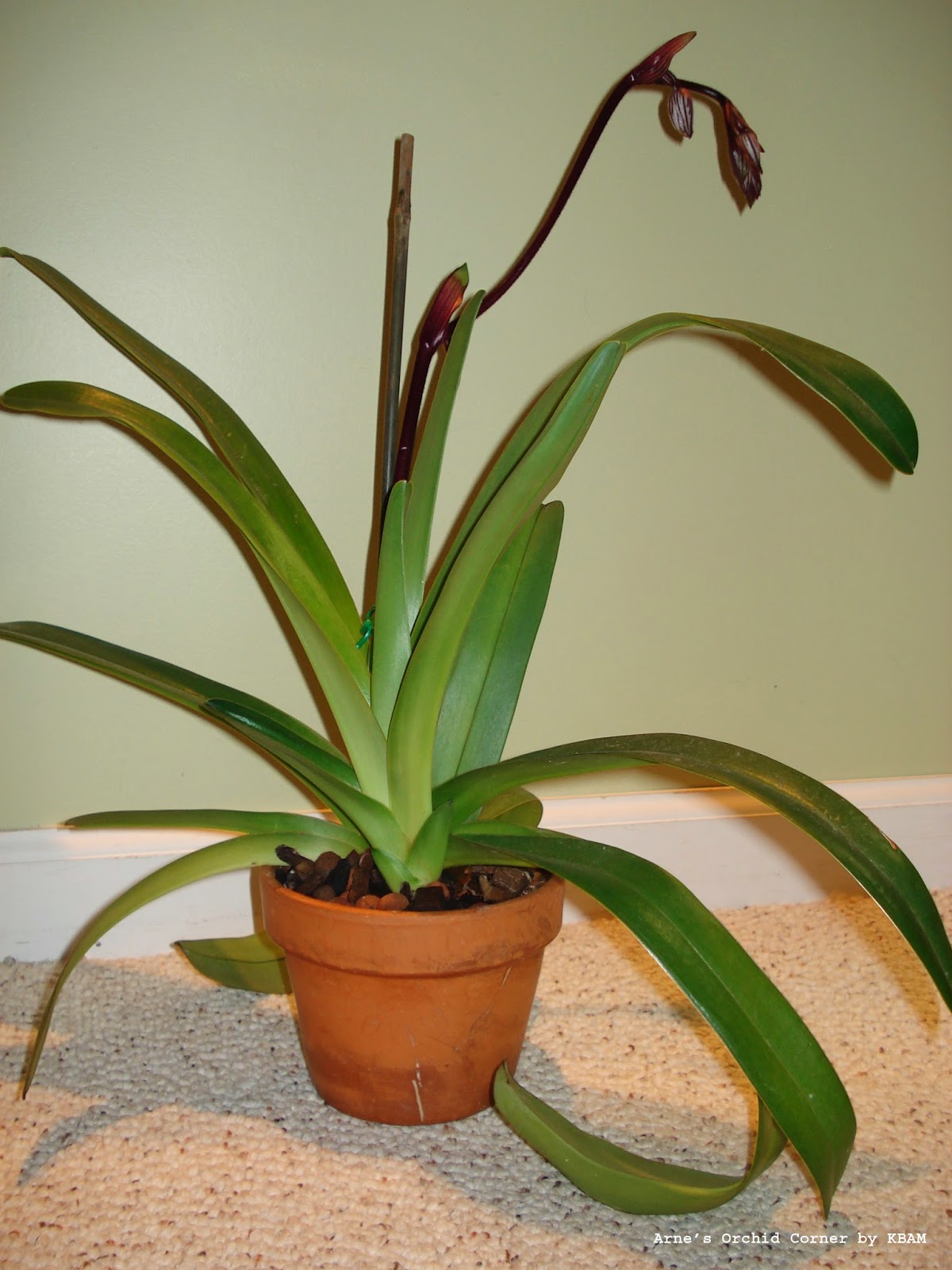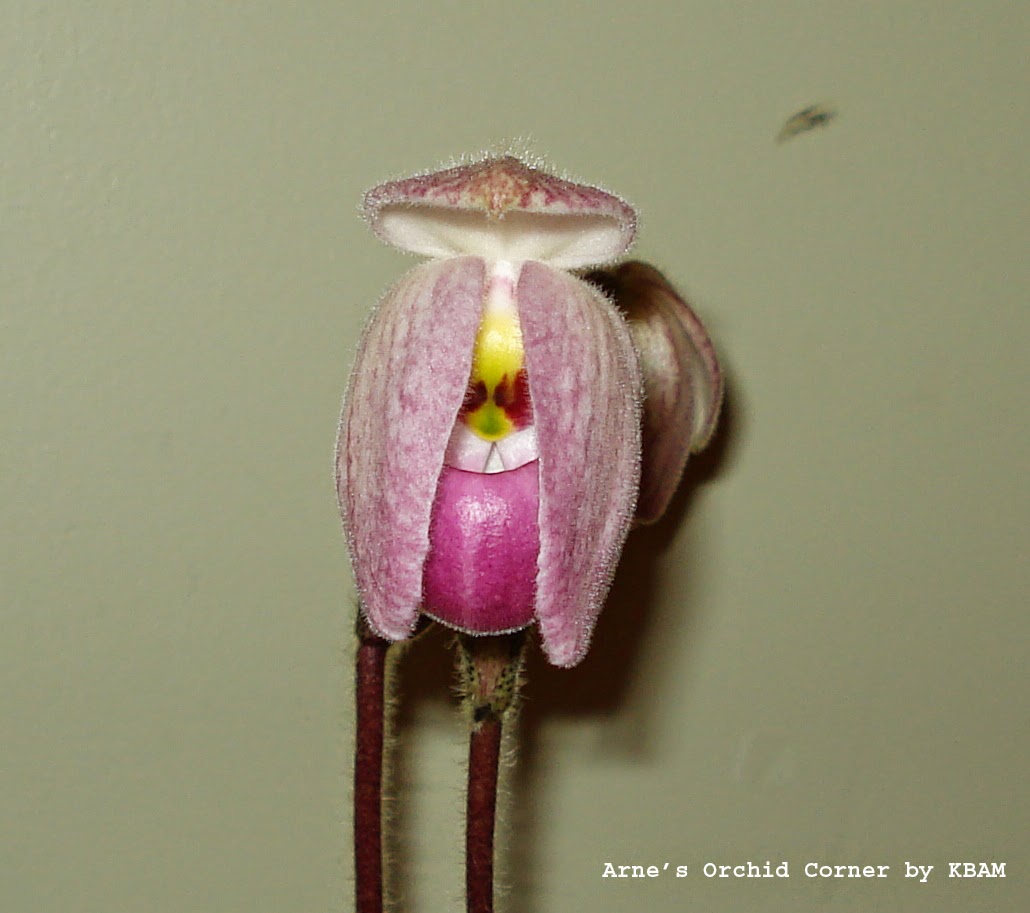Ascofinetia Cherry Blossom Carmela, a cross between Neofinetia falcata x Ascocentrum ampullaceum, is a compact vandaceous type orchid that can be easily grown in bark or moss in pots or basket. In our case, Arne has it in a wooden airy basket. I started photographing when Arne noticed the flower stalk in early April.
Neofinetia falcata, is a native orchid of Japan while Ascocentrum ampullaceum, another mini vandaceous orchid is native to the more subtropical to tropical rain forest regions such as, Central China, Western & Eastern Himalayas, Assam India, Bangladesh, Nepal, Bhutan, Thailand, Burma, Vietnam and Laos to name a few countries.
Interestingly, Arne bought a Neofinetia falcata, while he was at the Maryland Orchid Exhibition in March this year. Did you know that Neofinetia falcata was the favorite of the ruling Shoguns in Japan? Well, we'll talk about that orchid when it flowers!
 |
| A) April 13th. One stalk appeared. |
 |
| B) April 13th. Further close up of the flower stalk. |
 |
| C) April 28th. Two weeks later, we can clearly see two distinct flower stalks. It was still hard to determine how many flowers per stalk at that time. But there were going to be many! |
 |
| D) May 18th. Most of the flowers were in bloom. These photos were really up close and I decided to add my dog, Anthony to the mix. |
 |
| E) May 18th. Anthony providing some perspective to the size of this mini orchid. I think he is getting used to posing next to an orchid! |
 |
| F) May 18th. A close up. A cluster of mini vandas! |
 |
| G) May 26th, Memorial Day 2014, Ascofinetia Cherry Blossom Carmela, in full bloom. |
Now that our Ascofinetia Cherry Blossom Carmela is in full bloom, we can safely say, we have two stalks and 25 flowers per stalk. A grand total of 50 flowers! FYI, Arne got this orchid at the Maryland Orchid Exhibition two years ago.








































